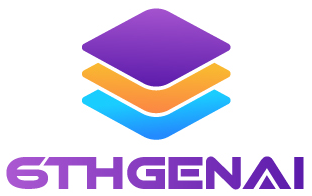Introduction
In this swifty-paced era of the internet, it is necessary to monitor systems in order to facilate the smooth operation of your infrastructures. Engineers have been using tools like Prometheus for collecting and analyzing system metrics. Although it works well, there is need for a thorough knowledge of PromQL (Prometheus Query Language) when querying this data which may be complicated for non-technical users.
The solution is found in Amazon Bedrock—an AI service that enables natural language queries in systems monitoring, therefore helping both technical and non-technical users to easily access insights. This blog post will assess how best we can incorporate Prometheus with Amazon Bedrock so as to make system monitoring more accessible and effective.
What is Prometheus?
Prometheus is a free software which can be used for monitoring and alerting in cloud-native systems. It collects data from various sources and stores it such that various queries can be made against it using the PromQL query language designed specifically for it.
For DevOps engineers, this tool works in tracking system performance and health. However, there is always a steep learning curve involved especially for someone who has never interacted with PromQL. The other factor is that unless you are technically oriented accessing the monitoring data through query syntax nuances could be difficult.
What is Amazon Bedrock?
Amazon Bedrock is a Service that helps you develop and run Machine Learning Models that are powered by AI. Among Bedrock’s stand-out features is natural language search processing capability which enables use of layman’s terms when interacting with database systems and the complex tools.
This means users can ask Bedrock questions such as “What has been the CPU usage of my servers in the last hour?” instead of creating difficult PromQL queries, since it integrates with monitoring tools like Prometheus making its monitoring data available for everyone hence faster insights are possible and dependence on specialized skills is reduced at the same time.
The Way that Integration Operates
Prometheus and Amazon Bedrock integration systematizes monitoring without any hassle. To get more insight into how this works, let’s look at some technicalities:
Metric Scraping: Workloads running on your Amazon EKS cluster are scraped for metrics by AWS-managed collector that is directly ingested into Amazon Managed Service for Prometheus. This way, queries can be formed based on all vital information including CPU and memory utilization related to system performance.
Natural Language Query: The Amazon Bedrock agent receives user natural language commands. For instance, when asked, “What is the CPU utilization of my EKS cluster in the last 24 hours?” a user will get an answer directly from it.
PromQL Generation: The Amazon Bedrock agent processes natural language queries and generates necessary PromQL query to retrieve data from Amazon Managed Service for Prometheus.
Action Group: The PromQL query is sent to an action group, which defines the set of actions that the agent can perform. In this case, Lambda function authenticates with Amazon Managed Service for Prometheus, executes the PromQL query and retrieves related metrics.
Query Results: Action group fetches query results and provides them back to the Bedrock agent.
Knowledge Base Integration: This step is further enhanced using Amazon Bedrock’s Knowledge Base. Knowledge Bases allow you to integrate proprietary information into your AI applications. Using the Retrieval-Augmented Generation (RAG) technique, the Knowledge Base searches your proprietary data to find the most relevant information. The agent uses this information to provide contextually enhanced answers to your natural language queries.
Natural Language Response: Finally, the agent digests the results, adds the appropriate context, and presents the answer back to the user in a simple, natural language format. For example, instead of just showing raw metrics, the agent might say, “Your EKS cluster’s average CPU utilization over the past 24
Hence, with this integration, people no longer need to remember PromQL syntax, allowing monitoring data to be accessible to more people within the organization.
Following diagram illustrates how Amazon Bedrock agent derive insights from Amazon Managed Service for Prometheus.

Why This Integration Matters
Prometheus and Amazon Bedrock come together to offer a number of advantages:
Easy Access: Monitoring data is accessible effortlessly by both technical and non-technical users as there is no need to know PromQL.
Quick Analysis: Users can get key metrics promptly without engaging in long processes of creating and debugging the PromQL queries.
Wider Reach: Team members can extend their contributions towards health and performance analyzing the system hence monitorizing becomes democratized through integration.
Less Errors: There are reduced chances of erroneous or incomplete queries since they are generated by Bedrock.
Fuller teamwork: Improved justification by teams implies better cooperation, as many individuals can retrieve data at once.
Sample Use Case
Let us consider that a non-technical manager needs to check how their infrastructure is faring. There is no longer any need for an engineer to put together a complicated PromQL query as the manager simply types in Bedrock’s natural language interface “What’s the average memory usage of my servers over the past week?”
Here’s how it works:
- The manager types the question into the interface.
- Amazon Bedrock interprets the question and translates it into the appropriate PromQL query.
- Prometheus retrieves the relevant data from its database.
- The results come as a simple chart or table, showing memory usage trends over the last week.
The possibility of accessing significant performance indicators independently is presented to managers, analysts and various other stakeholders by this. It is a revolutionary approach meant for teams aimed at decreasing the neck in the analysis and querying of data related to system performance.
FAQs
Q: Who benefits the most from this integration?
A: In addition to technical users like DevOps engineers, non-technical stakeholders such as business managers or analysts can also profit by the integration. Time is saved for technical users while direct access to monitoring insight is gained by non-technical users.
Q: Will I still need to learn PromQL?
A: No completely. PromQL is still crucial for more advanced situations and specific queries. However, natural language queries would work just fine in most cases of standard monitoring.
Q: Is it already available?
A: The natural language query features of Amazon Bedrock are rolling out gradually and your specific AWS environment along with the version of Prometheus you are using will determine their availability.
Q: How does this integration foster security?
A: Because the data queries are processed through Amazon’s safe services, data privacy and security steps meet AWS top principles. The integration is structured using encryption, so it possesses secure access controls.
Further Reading and Resources
Prometheus Documentation – Improving your knowledge about configuration and utilization of Prometheus for system monitoring.
AWS Bedrock Overview – Explore the abilities of Amazon Bedrock to process human language questions among other artificial intelligence tasks.
PromQL: A Beginner’s Guide– A deeper exploration of traditional querying with PromQL for interested learners.
Integrating AI Models with Monitoring Tools-Discussing how machine learning and artificial intelligence is transforming infrastructure monitoring.
- By admin





